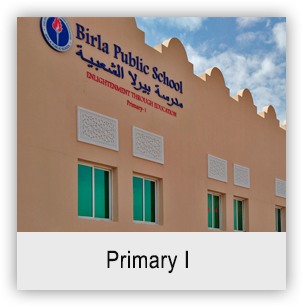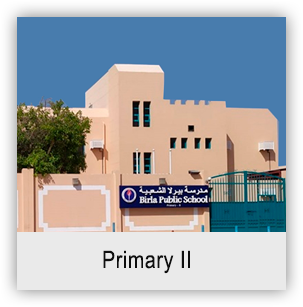SCHOLASTIC
Secondary School
The academic curriculum for the students is based on syllabi laid down by the reputed and universally accepted Central Board of Secondary Education (CBSE), New Delhi, India. The school focuses on individual learning ability. The pedagogy is built on proven methods and addresses holistic development of children. Classroom learning brings with its state of the art learning equipment and digital technology aids. The school provides well equipped laboratory, library, digital class rooms. The classrooms are equipped with projector, interactive boards and high speed internet. The class rooms also have lockers for students to keep their books in order to avoid carrying heavy loads of books daily.
Admission
Admission is granted on the basis of an entrance examination conducted by the school. These entrance examinations are conducted well before the commencement of the new academic session. Offers for admissions are made on the basis of the results of these examinations and depends on the number of vacancies in each class.
The Strength
The secondary school consists of classes 9 and 10. The present strength in the secondary school is 1014 studentsScheme of Subjects Offered
Scheme of studies is offered as per the CBSE guidelines. CBSE envisions the all-round development of students in consonance with the holistic approach to education and therefore, emphasize integration of co-curricular domains with curricular activities in an equitable manner. In operational sense, the secondary curriculum is learner-centered with school being a place where students would be acquiring various skills; building self-concept, sense of enterprise, aesthetic sensibilities and sportsmanship. Therefore, for the purpose of fostering core competencies in learners, this curriculum encompasses six major learning areas, from scholastic and co scholastic point of view.
| Languages | Scholastic Areas |
| Social Sciences | |
| Mathematics | |
| Science | |
| Health and Physical Education | Co-scholastic Areas |
| Art Education |
Well trained and qualified teachers facilitate the learning of all subjects, by the students. All the subjects are compulsory and the only choice is in 2nd language. The subjects offered are:
1. English
2. Mathematics
3. Social Science/Qatar History
4. Science
5. Second Language { Options: Arabic, Hindi, French, Malayalam, Tamil }
6. Physical Education
7. Art and Craft
8. Value Education/Islamic Studies
9. Work Experience
10. General Knowledge
11. Life skills
Assessment
The Birla Public School follows the guidelines by CBSE for All Assessment through the Academic Year.
The CBSE Assessment Scheme is as follows:
The Assessment scheme will have an 80 marks component for Board examination (class X) andThe Assessment scheme will have an 80 marks component for Board examination (class X) andAnnual Examination (class IX) in all scholastic subjects along with a 20 marks component ofInternal Assessment. Students have to secure 33 percent in total in each of these components.
For Class X:
For Class X:For Class X:The Board Examination of three hour duration for 80 marks in each subject will coverentire syllabus of Class-X. Marks and grades on the basis of 9-point grading system.Grades will be awarded in each scholastic subject. Forwarding the grades ,the Board willput all the passed students in a rank order and will award the grades as follows:
|
A-1 |
Top 1/8th of the passed candidates |
|
A-2 |
Next 1/8th of the passed candidates |
|
B-1 |
Next 1/8th of the passed candidates |
|
B-2 |
Next 1/8th of the passed candidates |
|
C-1 |
Next 1/8th of the passed candidates |
|
C-2 |
Next 1/8th of the passed candidates |
|
D-1 |
Next 1/8th of the passed candidates |
|
D-2 |
Next 1/8th of the passed candidates |
|
E |
Failed candidates |
Notes:-
a) Minor variations in proportion of candidates to adjust ties will be made.
b) In case of a tie, all the students getting the same score, will get the same grade. Ifthe number of students at a score point need to be divided into two segments, thesmaller segment will go with the larger.
c) Method of grading will be used in subjects where the number of candidates whohave passed is more than 500.
d) In respect of subjects where total number of candidates passing a subject is lessthan 500, the grading would be adopted on the pattern of grading and distribution inother similar subjects.
For Class IX:
The assessment scheme will be similar to class X Board examination. However, the grading The assessment scheme will be similar to class X Board examination.
Grading Scale for Scholastic Areas (Class-IX) |
|
| MARKS RANGE | GRADE |
| 91-100 | A1 |
| 81-90 | A2 |
| 71-80 | B1 |
| 61-70 | B2 |
| 51-60 | C1 |
| 41-50 | C2 |
| 33-40 | D |
| 32 and below | E (Failed) |
Internal Assessment (20 Marks)
One time year-end examination is complimented and supplemented with Internal Assessment (IA)One time year-end examination is complimented and supplemented with Internal Assessment (IA)that assesses students in diverse manner, at different times and also examines a broad range ofcurriculum objectives. IA, in effect school based assessment, plays the dual role of providing a complete picture of students’ abilities or progress towards fulfilling the aims of education and informing teachers’ of students’ progress and therefore supporting classroom learning. It also informs the individual learner about his/ her progress over a period of time enabling them to develop strategies to improve learning.
Periodic Assessment:-
The main purpose of Periodic Assessment is to assess the learning progress of students. SuchAssessment done at regular intervals provides feedback and insight to teachers regarding learners’needs and helps them to improve instruction, do remedial teaching and set curricular targets for a student or a group of students. The feedback also helps students to know their errors as well as strengths and weaknesses. The students, thus, are enabled for better learning and setting up realistic goals. In essence, this is assessment for, of and as learning. Periodic Assessment is further divided into the following:
Periodic Tests (05 marks):
As earlier, these would be restricted to 3 in each subject in anPeriodic Tests (05 marks): As earlier, these would be restricted to 3 in each subject in an academic year and the average of best 2 would to be taken for final submission of marks. These tests end to follow a pattern, which is quite similar to the final end of course examination, and have a gradually increasing portion of content. Hence, they also tend to prepare students for final summative exams in a more confident manner. The weightage of this component, however, would be of 05 marks only.
Multiple Assessment (05 marks):
Multiple assessment strategies relevant to particular learning multiple Assessment (05 marks): Multiple assessment strategies relevant to particular learning outcomes are advised over the period of curriculum transaction. The subject teachers would determine the type and frequency of these. This would make assessment more comprehensive and provide schools/teachers flexibility to use multiple and diverse techniques to assess learners viz.observation, oral tests, individual or group work, class discussion, field-work, concept maps, graphic organizers, visual representation etc. Hence, the schools are given autonomy to use alternate modes of assessment as per the demand of the subject and the context towards addressing the goal of assessment for and as learning. Caution must be observed that recording of such assessment is not cumbersome and can be easily translated into individual student scores. Thus, developing simple scoring criteria and rubricsbecomes of equal importance when deciding to use a particular technique. In tune with purpose of periodic assessment i.e. to provide feedback to improve teaching and learning, it becomes of equal importance to use follow-up measures incase students are found deficient in proficiency of relevant learning outcomes.The weightage of this component would be of 05 marks.
Assessment of Co-Scholastic Areas
three major Co- scholastic activities viz., Art Education and Health and Physical Education. Assessment of Co-scholastic Areas may be continuously done by collecting information, reflecting on and using that information to review children’s progress and to plan future learning experiences. The documented data, after interpretation, is reflected in the Report Card of the children in the form of grades.
In the existing scheme of assessment, these activities will be graded on a 5-point grading scale (A to E) for classes IX-X and will have no descriptive indicators
Details of Five-point Grading for Co-scholastic Areas (Class IX and X)
| Grade | Connotation |
| A | Outstanding |
| B | Very Good |
| C | Good |
| D | Fair |
| E | Average |






